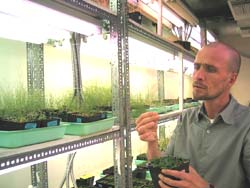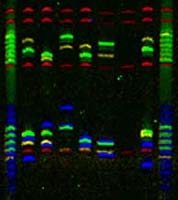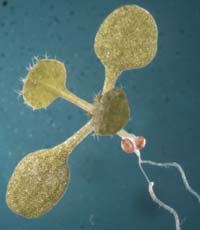Life Sciences and Chemistry
Articles and reports from the Life Sciences and chemistry area deal with applied and basic research into modern biology, chemistry and human medicine.
Valuable information can be found on a range of life sciences fields including bacteriology, biochemistry, bionics, bioinformatics, biophysics, biotechnology, genetics, geobotany, human biology, marine biology, microbiology, molecular biology, cellular biology, zoology, bioinorganic chemistry, microchemistry and environmental chemistry.

UC scientists discover plant gene that promotes production of ozone-destroying methyl halides
A team of University of California scientists has identified a gene that controls the production by terrestrial plants of methyl halides, gaseous compounds that contribute to the destruction of ozone in the stratosphere.
The discovery of the gene, detailed in the October 14 issue of the journal Current Biology, is important because it now provides scientists with a genetic tool with which to probe how and why plants produce methyl halides. The identification of the gene should also help res

Monkeys Consciously Control a Robot Arm Using Only Brain Signals
Appear to “Assimilate” Arm As If it Were Their Own
Researchers at Duke University Medical Center have taught rhesus monkeys to consciously control the movement of a robot arm in real time, using only signals from their brains and visual feedback on a video screen. The scientists said that the animals appeared to operate the robot arm as if it were their own limb.
The scientists and engineers said their achievement represents an important step toward technology that could ena

Nerve disorder in mice and men linked to mutated gene
Discovery shows power of mouse genome to identify human genes for rare genetic diseases
In a small town on Grand Cayman Island in the Caribbean, people are living with a serious neurological disorder, called Cayman ataxia, found nowhere else in the world.
People born with this rare, inherited condition have poor muscle coordination, some degree of mental retardation, uncontrollable head and eye movements and difficulty speaking or walking.
Now, in a discovery that

Standard improves tests of male DNA
Mother Goose tells us that boys are made of “snips and snails and puppy dog tails.” She was clearly misinformed about the snails and tails, but she was on to something with the snips. What you really need to build a boy is a “Y” chromosome, and it turns out that SNPs (single nucleotide polymorphisms), known by the biotech cognoscente as simply “snips,” can be helpful in sorting out who fathered the boy. If DNA can be thought of as an instruction book for building a specific person, then SNPs are sing

New gene necessary for plant growth and development discovered
By taking a fresh approach to an old problem, University of California, San Diego biologists and colleagues at other institutions have found a new gene essential for plant growth, a discovery that could lead to the design of better herbicides and even novelty plants.
Despite 100 years of research on auxin, a plant hormone essential in regulating plants’ development and responses to their surroundings, including the ability of plants to grow toward light, much remains unknown about how auxin

African Ancestor Of The Russian, Chinese And American Indian
Large-scale genetic research carried out by Russian and American scientists have proved that contemporary mankind originated from a very small group of people. Common ancestors have been discovered for the entire population of many billions inhabiting all five continents of the Earth: these are two thousand primeval hunters-gatherers who used to live in Africa more than 100,000 years ago. New data has been also obtained about the rates and directions of human beings’ prehistoric evolution, and the wa